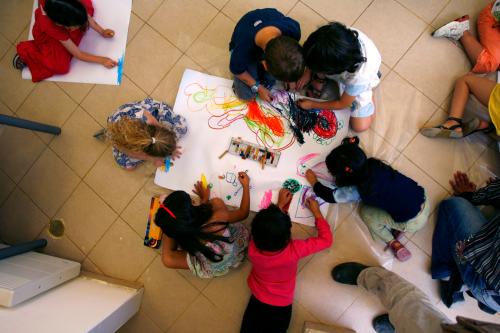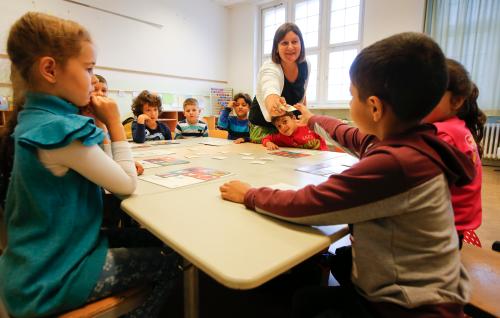This is the fourth piece in a blog series on learning progressions.
Learning progressions have been described as roadmaps that help align curriculum, pedagogy, and assessment. These roadmaps point out important locations on the typical journey from novice to expert by describing what someone at each important location on the roadmap knows and can do. The descriptions highlight what is unique about each location, ensuring that differences between locations are emphasized so the transformations in skills and knowledge along the learning journey can be recognized. By mapping the journey, learning progressions help ensure the curriculum developers, teachers, and assessment designers are all working with the same destination in mind.
Increasingly, learning progressions are being used both to construct assessment tools that will reflect the learning pathway, as well as to locate how students are meeting learning goals. Focussing on these two parallel functions can be useful to central education systems in evaluating new curricula.
Different types of curriculum design require learning progressions of different grain sizes. When developing multi-year curricula, designers require coarse-grained learning progressions which describe learning over a long time period. An example from the USA illustrates how levels on a learning progression in science can be mapped to two or three grades each so the curriculum can be designed accordingly. This approach provides the opportunity to design evidence-based curricula which mirror the typical patterns of development for learners across grades because the learning progressions are founded on research.
In the Philippines, we have applied this approach through fine-grained learning progressions that are being used to monitor student progress through the new science curriculum for Grades 7-10. The curriculum presents increasing levels of complexity from one grade to another in an upward spiraling progression, to develop deep understandings of core science concepts and skills. This provides the opportunity to construct tests that reflect this progression, and the test results can be used in multiple ways.
We wanted to know whether students entering a grade had the pre-requisite knowledge, skills, and understanding needed to be able to engage successfully with the science chemistry curriculum at that grade level. To develop the tests used in this research, and with the support of the Philippines Department of Education, the Assessment Curriculum and Technology Research Centre (ACTRC) collaborated with colleagues from University of the Philippines National Institute for Science and Mathematics Education Development (UP NISMED), University of Philippines College of Education, and its Integrated School to audit the curriculum and identify the prerequisite conceptual knowledge and skills that are necessary for students to engage with the chemistry content in each of Grades 7-10. Using the audit information, test items were written to assess mastery of the identified concepts and skills.
As students entered into each of the grade levels, they took the grade-appropriate test, which provided information about their readiness to engage with the curriculum. The results, aligned with the progressions, captured the levels of proficiency of students within each successive grade. Some students were still at early locations along the learning journey, while others had progressed further and employed more sophisticated chemical thinking. The levels on each learning progression were then compared to the pre-requisite skills and knowledge expected by the grade level curriculum and the percentage of students who are ready (and not ready) for the curriculum content were calculated.
Box 1 shows four levels of performance: A to D on the pre-Grade 8 test. From the expert identification of what level of skill is required to enable students to engage successfully with the Grade 8 chemistry curriculum, students in Level C and above were found to be ready for the Grade 8 curriculum, while students in Level B and below were found to be unready. The differences between the knowledge and skills at Level B and Level C included the crucial distinction between representations of matter where differences can be seen by the naked eye and representations of matter where differences cannot be seen even with a microscope and must be understood conceptually. The results suggest that this fundamental change in how scientific knowledge is represented is one for which many of the students were unprepared when entering Grade 8 chemistry.
Box 1. Levels through the Grade 8 chemistry curriculum
| Level D – Students at this level are starting to interpret pH scales to make inferences about acidity basicity. They are beginning to make deductions based on their understanding of scientific terminology (element, compound, mixture, density). They are starting to recognize that gases are compressible. |
| Level C – Students at this level are starting to use the appropriate scientific terminology to distinguish between sub-microscopic particles (atom, molecule, compound, element, mixture, proton, electron, neutron). They are learning to use chemical symbols and to connect the position of an element on the periodic table with its classification as a metal/non-metal. They are beginning to make inferences from experimental data presented in tables and graphs in order to identify trends and explanations and to draw conclusions. |
| Level B – Students at this level are beginning to recognize the particulate nature of matter, e.g., that ice and water are the same substance with different arrangements of particles. They are learning to use scientific terminology to describe the properties of metals and non-metals (malleable, ductile, brittle) and recognize that heating causes expansion. Students are starting to read instruments accurately, convert between different units of measurement, choose the correct scale for accurate measurement, and link given graphs and diagrams with written descriptions. |
| Level A – Students at this level are learning the macroscopic properties of solids, liquids, and gases. They are beginning to classify metals and non-metals based on their properties; that metals conduct heat; that non-metals are not attracted by magnets. Students are starting to use data in tabulated form. |
The use of student achievement data marked against the learning progressions continues to provide the information needed to evaluate how the Philippine Science curriculum is performing. In working with the Department of Education in its first few years of implementing the new K–12 curriculum, the study demonstrates that there are some concerns with current implementation. Although the data capture what students can do and cannot do at each level of the progression, they don’t answer why this is happening—that is an issue that the Department of Education is exploring. What the data do provide is the essential information about whether students are achieving in line with the system’s new learning goals.






Commentary
Identifying student readiness through science learning progressions in the Philippines
May 18, 2018